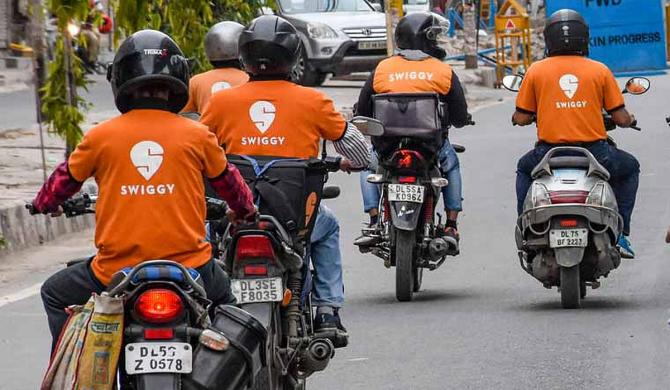For food aggregator platform Swiggy, quick commerce (qcom) is proving to be a better growth opportunity than food delivery. Its qcom arm Instamart is rapidly outpacing its core food delivery vertical across several key financial metrics, the company’s recently filed draft red herring prospectus (DRHP) shows.

In the first quarter of the current financial year (Q1FY25), Instamart’s gross order value (GOV) grew 56 per cent year-on-year (Y-o-Y) to Rs 2,724 crore.
In contrast, its food delivery GOV grew by 14 per cent Y-o-Y to Rs 6,808 crore. The qcom vertical’s GOV is already at 40 per cent of food delivery GOV, despite being launched six years later.
Meanwhile, Instamart's average order value (AOV), at Rs 487, has surpassed the food delivery AOV, which stood at Rs 436 in Q1.
However, Instamart's revenue is still about a fourth of Swiggy's food delivery business.
So, a lower base is also helping it grow faster. Swiggy’s food delivery business recorded a gross revenue of Rs 1,730 crore in Q1, compared to Instamart’s Rs 403 crore.
Instamart vs Blinkit
Instamart’s growth trajectory is similar to that of its Zomato-owned listed rival Blinkit, whose valuation surpassed the valuation of Zomato’s core food delivery business earlier this year, Business Standard had reported in April.
In Q1FY25, like Instamart, Blinkit’s GOV grew by a massive 130 per cent Y-o-Y, much ahead of Zomato’s food delivery GOV, which increased 21 per cent Y-o-Y.
The senior management at Zomato, including CEO Deepinder Goyal, has long held the view that the qcom opportunity is significantly larger than food delivery.
Dark store expansion
Swiggy on Thursday filed its DRHP with the Securities and Exchange Board of India (Sebi), where it is mentioned that the proceeds of the IPO would be utilised for expansion of its dark stores.
Following the IPO, the food delivery major is planning to use as much as Rs 982 crore to expand Instamart’s dark store network via its subsidiary Scootsy.
“We propose to utilize up to Rs 559 crore out of Rs 982 crore towards investing in our material subsidiary Scootsy, which will, in turn, be utilized for opening 538 dark stores measuring approximately 1.88 million square feet (sq ft),” the DRHP stated.
As of June 30, the company operated 581 dark stores ranging in size from 1,400 sq ft to 10,000 sq ft.
Instamart’s expansion plans come at a time when competition in the qcom space is intensifying.
Instamart’s rivals Blinkit, Zepto and Flipkart are rapidly increasing their own dark store networks as well.
Blinkit aims to increase its dark store count to 2,000, up from 639 in the June quarter, by the end of 2026.
According to CEO Albinder Dhindsa, most of these will be in the top 10 cities.
Similarly, Mumbai-based Zepto is planning to expand its store count from 350 currently to 700 by March 2025.
E-commerce (ecom) major Flipkart — the most recent entrant into the qcom space with “Minutes” — had previously announced plans to open nearly 100 dark stores across top cities.










